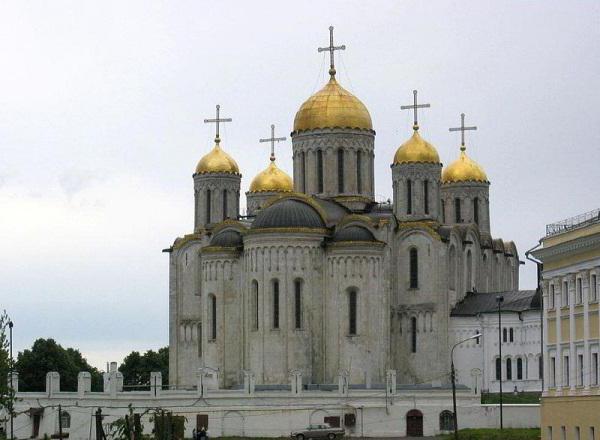When you go into any Orthodox church, in the foreground you can immediately see the holy of holies - the altar, which is an image of the Kingdom of Heaven. The main shrine is located in the altar - the consecrated table, called the Throne, on it the priest performs his greatest sacrament when the transformation of bread into Flesh and wine into the Blood of Christ takes place.
What is an iconostasis?
The altar is separated from the rest of the temple by the iconostasis. Dealing with the question of what the iconostasis is, it should be noted that it is a special separating partition, with icons placed on it with the faces of saints. The iconostasis, as it were, connects the heavenly world with the earthly world. If the altar is the mountain world, then the iconostasis is the earthly world.
The Russian Orthodox iconostasis contains five high rows. The very first row is called the forefathers, it is the topmost, it depicts the forefathers of the Holy Church from the first man Adam to the Old Testament prophet Moses. In the center of the row, the image of the “Old Testament Trinity” is always established.
And the second row is called prophetic, therefore the prophets are portrayed here, who proclaimed the Mother of God and the birth of Jesus Christ. In the center is the “Sign” icon.
The third row of the iconostasis is called the Deesis and means the prayer of the whole Church to Christ. In the very center of it is placed the icon "The Savior is in power", which depicts Christ sitting as a formidable Judge of the whole world he created. To his left is the Most Holy Theotokos, and to his right is John the Baptist.
In the fourth festive row, the events of the New Testament are told, originating from the Nativity of the Virgin Mary herself.
And the bottom, fifth, row of the iconostasis is called the “local row”, in the center of it are the Royal Gates, above which the “Last Supper” icon is placed, and on the gates themselves is the “Annunciation” icon (where the Archangel Gabriel tells the good news to the Holy Virgin) , and on both sides of the gate are the icons of the Savior and the Virgin.
You also need to pay attention to the fact that on both sides of the Royal Gates there are single-wing small doors, they are called deacon's. If the temple is small, then this door can be done only on one side.
Assumption Cathedral in Vladimir: photos and description
In general, the style, shape and height of the iconostasis depend on a study of the architecture and history of the temple in which it will be erected. And it should scale in accordance with the proportions of the temple itself, which in ancient times was designed by architects. The design of the iconostases and the composition of the icons in it have changed many times.

The Assumption Cathedral in Vladimir (photo of which is presented above) has the first iconostasis with fragments that have survived to this day. It dates from 1408, this is the work of Andrei Rublev and his contemporary monk Daniil Cherny. Once upon a time, it consisted of high four tiers, the Deesis rank among which was performed in a larger manner and advanced from the general plan, this showed its special role. The iconostasis in the temple did not cover the dome pillars, thanks to them it was divided into parts. Later, the Vladimir iconostasis became a model for the iconostases of the Moscow Kremlin Assumption Cathedral (1481) and the Assumption Cathedral in the Kirillo-Belozersky Monastery (1497).
Cathedral History
This cathedral was built during the reign of Prince Andrei Bogolyubsky in the middle of the XII century, and the most skilled craftsmen from all over the Russian and Roman West were invited to Vladimir to do this. It was built to store the icon of the Vladimir Mother of God - the patroness of Russia. It is assumed that this icon was painted during the life of the Virgin Mary herself by the Evangelist Luke. Then in 450 she came to Constantinople and stayed there until the XII century, and then was donated to Yuri Dolgoruky, the father of Andrei Bogolyubsky. Then she saved the Russian princely cities many times from ruin and war.
Iconostasis
The question of what is the iconostasis can be continued with an interesting fact about the very first information about the separation of the altar from the rest of the space in the church with a curtain or barrier that dates back to the 4th century. Then, even in Byzantine churches, these altar barriers were quite low and were made of parapet, stone beam (templon) and columns. A cross was placed in the center, and on the sides of the altar were the icons of Christ and the Mother of God. After a while, icons began to be placed on the template, or relief images were cut out on it. The cross was replaced by the icon of Christ, and then by Deesis (in other words, Deesis, prayer) - a composition of three icons: in the center is Christ the Almighty, and the Mother of God is prayed to him on the left side, and John the Baptist on the right. Sometimes festive icons or individual saints icons were added on both sides of the Deesis.
Conclusion
The first ancient Russian temples completely repeated the Byzantine samples. But this was not always possible, because most of the churches were wooden, and wall paintings were not made on them, but in the iconostasis the number of icons increased and the altar wall grew.
The answer to the question of what the iconostasis is must be supplemented by the fact that the high five-tier iconostasis became widespread in Russia already in the middle of the XVII century, when the local row, holidays, deisis, prophetic and forefather series appeared.